
Myant Technologies weaves its way into wearable tech
Stephen Law
Electronics Production / Materials Printable Electronics Supply Chain Wearable Technology computing computing Myant Myant tech textile textile wearable wearable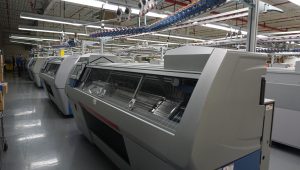
Myant provides prototyping facilities and nearly 100 of the most advanced robotic knitting machines in the world.
Toronto-based textile computing company Myant Inc. is an emerging global leader in the integration of technology, namely biosensors and actuators, into the yarns and fibers that comprise a textile product. From clothing to car seats, bedding, flooring and more, Myant’s technology creates the intelligent interface between individuals and the world around them.
Believed to be the world’s only true end-to-end company developing and producing textile computing products, Myant employs a diverse team of 65 engineers, scientists, technicians and designers. Myant collaborates closely with local post-secondary institutions and research organizations to create and discover incredible innovations, from fibre level development to examining physiological influencers on the end product.
EP&T takes this opportunity to pose some questions to Myant chief executive officer Tony Chahine.
Q. Textile isn’t usually thought of as the most ‘innovative’ technology – tell us why you chose to focus on it?
Great question, and you’re right. Textile hasn’t traditionally been viewed as a place for innovation. Yet, textile is the most natural medium for technology given it’s around us 24/7. You sleep on textile, you wear textile, you sit on textile, you walk on textile, etc. It’s the perfect interface in a world of connected devices and connected technologies to link the human body – to the IoT.
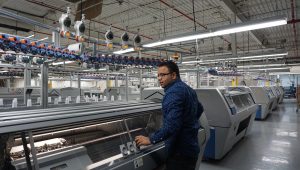
Myant’s 80,000 square foot facility in Etobicoke (Toronto) houses the world’s most advanced robotic knitting machines, enabling the world’s only end-to-end textile computing capacity, from research and development through end production.
Q: Using textile as the form factor that connects humans to the Internet of Things, describe the inner workings of Myant’s Textile Computing platform.
Textile computing refers to the integration of biometric sensors and actuators (heat, cooling & electric stimulus) into the very yarns or fibers of a textile product. Alongside those sensors and actuators is hardware with built-in software that transmits the data from your body via Bluetooth to your phone or other device. The result is a continuous and bi-directional digital connection to the human body through textile.
Q. With more than 80,000 sq. ft. of advanced manufacturing capacity, describe how Myant’s facility provides an end-to-end textile computing supply chain.
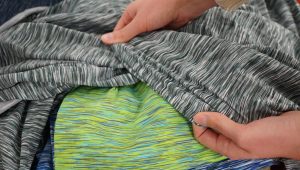
Textile Computing represents a truly bi-directional, proactive, and continuous medium between our bodies and the world around us.
Myant is comprised of nearly 80 team members both here in Etobicoke, and in Ottawa at our satellite office. This team provides the full staff for textile computing – from research and development on yarns and fibers; through biomechanical, chemical, and electrical engineering expertise; data science capabilities; right through to prototyping facilities and nearly 100 of the most advanced robotic knitting machines in the world. In addition, we have partnerships with Stoll A.G. for exclusive access to the world’s best robotic knitting machines, and with Carlisle Interconnect Technologies for access to the most conductive, washable and strongest yarns. All of this combines to make us the go-to provider of textile computing expertise.
Q. As a leader in this emerging industry sector, detail some of the ‘life-changing’ products Myant has created since its inception in 2010.
Textile computing represents a new way to change the modality people use to interact with technology with the potential to have revolutionary impacts on human life. In the immediate future we think that textile computing is going to fundamentally transform healthcare by allowing for remote monitoring and remote diagnostics regardless of geography, and we’ll be launching our SKIIN brand of products later this year, with a focus on heart health and wellness. Our SKIIN product line will engage people in their own health by making it easier for individuals to understand what’s going on in their bodies in real time and, by sharing that information with their medical team, proactively address any issues. Our work on electromuscle stimulation, or neuro-orthosis, is potentially even more transformative as we are bringing back mobility and confidence to individuals who have lost the ability to move.
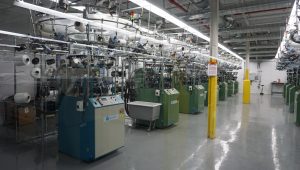
Myant’s patented processes see biometric sensors and actuators embedded into fibers and yarns at the nano-scale. The result is a washable, comfortable interface for bidirectional (two-way), human-computer interaction.
Q. Outline Myant’s use of electronics, and some of the challenges this poses.
Since this is a brand new technology, our team of experts and engineers have to invent new ways to connect traditional textiles to electronics. Creating the power, networking and computing capacity on a miniature device already isn’t an easy task, let alone building the connections between this hardware and the sensors that are embedded in the conductive yarns and fibers we develop and use. That’s why we have a multidisciplinary team in house who builds our technologies as well as work in partnership with great companies like Celestica to overcome some of the challenges we face.
Q. Detail Myant’s processes of product creation, as it relates to research, design & engineering, as well as product testing.
Myant has two channels in its business model – we have a direct to consumer SKIIN brand that we are launching shortly, along with a B2B model where we “power” other brands and form factors with our Textile Computing technology and intellectual property. e work closely with our partners to understand the needs of their customers and the user experience that is required. From there we create multi-disciplinary teams of designers, engineers and scientists to create the form factors and the hardware and software that will deliver both the sensing capacity and the user experience that will deliver real value-ad for our partners and their customers. And behind all of this is our research and development team that is continuously focused on finding and developing next generation yarns and fibers, as well as new sensing and actuation processes.
Q. Describe the importance partnerships play in Myant’s success?
We are very fortunate to be located within a few kilometres of great post-secondary institutions and research organizations. Our relationships with Toronto Rehabilitation Institute, Ryerson University, George Brown College, Sheridan College, McMaster and others help to ensure that we are building a deep ecosystem of talent, ideas and expertise related to the many disciplines that come together to form textile computing. As we grow, we will lean on that network for next generation ideas, IP and talent to become part of our workforce. Our partnerships with leading companies like Carlisle Interconnect Technologies and Stoll AG also guarantees us access to the highest quality conductive yarns on the market and robotic knitting technology that make us the world’s go-to provider of textile computing expertise and manufacturing capacity.
Q. How will the Digital Textile Factory benefit entrepreneurs and innovators seeking support in the creation of their own designs?
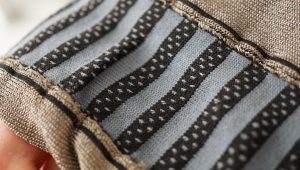
Textile fabrics as the computer interface of the future.
The Digital Textile Factory is a great example of our partnership with Stoll A.G., the world’s leading manufacturer of robotic knitting machines. Together we provide both the machine capability and the know-how, from research and development related to engineering and material science all the way to scalable manufacturing and shipping, to help entrepreneurs and other industry players adopt and experiment on the connection of textiles to the world of IoT. The Digital Textile Factory is about democratizing access to this new category of technology and the necessary know-how to engage successfully with it.
Q. Outline Myant’s role as a key partner in the advanced manufacturing supercluster in the Toronto-Waterloo Innovation Corridor (TWIC).
We are very excited by this initiative. As a result of the work of NGM Canada we have already made connections with new partners, both supply chain and potential customers. We hope to move forward later this year with a Centre of Excellence for Textile Computing that will help stamp the GTA as the world’s leading location for both research and commercialization related to textile computing and its application in industries like aerospace, automotive and healthcare.
Q. Can you describe or detail the types of products Myant is working on for future release.
Myant will launch the first generation of the SKIIN Smart Underwear later this year. This product includes the following sensing technologies: ECG (Heart rate, HRV), Breathing rate, Atrial fibrillation, Activity (steps, calories, activity recognition – walking, running, sitting/standing), sleep quality, stress level and temperature. Also in 2019 we’ll roll out more features including slip and fall detection, fatigue detection, ovulation sensing, blood pressure and much more. We’ll also be launching a heated base layer that auto-adjusts to deliver heat when and where you need it, regardless of your lifestyle. Whether at the bus stop or on the slopes, SKIIN Heat will deliver wire-free, automated temperature control.
